नवरात्रि के रंग और उनका महत्व

Navratri festivities are filled with vibrant colors that are visible in the decorations, dresses, and designs all around you. Every colour has a meaning and the uniqueness it represents.
नवरात्रि उत्सव जीवंत रंगों से भरे होते हैं जो आपके चारों ओर सजावट, पोशाक और डिजाइन में दिखाई देते हैं। प्रत्येक रंग का एक अर्थ और विशिष्टता होती है जो वह दर्शाती है।
Day 1: Red for Goddess Shailaputri
On the day 1, devotees offer their prayers to Maa Shailputri after the Kalash Sthapna. Goddess Shailputri is the daughter of Himalaya. Born in the house of the king of mountains, the pictorial depiction of Maa Shailputri shows her having two hands, holding the Trishul or the trident in the right hand, a pink lotus in the left, and a crescent adorns her forehead. She is seen riding on Nandi bull, she is the wife of Lord Shiva and has two kids, Ganesha and Kartikeya
She is the goddess of the Muladhara Chakra or the Root Chakra, who upon awakening begins her journey upwards.
Colour to Wear: Red
Chunni to offer: Red
Flower: Red Hibiscus
Prasad: Pure Ghee
Mantra: Om Devi Shailputri Namah॥
पहले दिन कलश स्थापना के बाद भक्त मां शैलपुत्री की पूजा करते हैं। देवी शैलपुत्री हिमालय की पुत्री हैं। पहाड़ों के राजा के घर में जन्मी, मां शैलपुत्री के चित्रमय चित्रण में उनके दो हाथ हैं, दाहिने हाथ में त्रिशूल या त्रिशूल, बाएं में एक गुलाबी कमल, और एक अर्धचंद्र उसके माथे को सुशोभित करता है। वह नंदी बैल पर सवार दिखाई देती है, वह भगवान शिव की पत्नी है और उसके दो बच्चे हैं, गणेश और कार्तिकेय वह मूलाधार चक्र या मूल चक्र की देवी हैं, जो जागने पर अपनी यात्रा शुरू करती हैं।
Day 2: Yellow for Goddess Brahmacharani
Brahmacharini stands for a devoted female student who only desired to marry Lord Shiva. This form is considered as the unmarried mediating form of Goddess Parvati. Her constant penance for a thousand years got her to wish fulfilled to become Lord Shiva’s consort. Devi Brahmacharini is symbolic of love and immense strength. She holds a rosary in one hand and a Kamandal in other.
Brahmacharini is a combination of two Sanskrit roots – Brahma(shortened from Brahman), means “the one self-existent Spirit, the Absolute Reality, Universal Self, Personal God, the sacred knowledge” and charini is the feminine version of one who is a charya, which means “occupation with, engaging, proceeding, behavior, conduct, to follow, going after”.
Colour to Wear: Yellow or green
Chunni to offer: Yellow
Flower: Jasmine
Prasad: Sugar or Mishri
Mantra: Om Devi Brahmacharini Namah॥
ब्रह्मचारिणी एक समर्पित महिला छात्र के लिए है जो केवल भगवान शिव से शादी करना चाहती है। इस रूप को देवी पार्वती का अविवाहित मध्यस्थ रूप माना जाता है। एक हजार वर्षों तक उनकी निरंतर तपस्या ने उन्हें भगवान शिव की पत्नी बनने की इच्छा पूरी की। देवी ब्रह्मचारिणी प्रेम और अपार शक्ति की प्रतीक हैं। उनके एक हाथ में माला और दूसरे में कमंडल है। ब्रह्मचारिणी दो संस्कृत जड़ों का एक संयोजन है – ब्रह्म (ब्राह्मण से संक्षिप्त), जिसका अर्थ है “एक स्व-अस्तित्व वाली आत्मा, पूर्ण वास्तविकता, सार्वभौमिक स्व, व्यक्तिगत ईश्वर, पवित्र ज्ञान” और चारिणी एक का स्त्री संस्करण है जो एक है चर्या, जिसका अर्थ है “व्यवसाय, संलग्न करना, आगे बढ़ना, व्यवहार करना, आचरण करना, अनुसरण करना, जाना”
Day 3: White for Goddess Chandraghanta
Known as the Goddess of spiritual and internal power, Chandraghanta sets her true devotees free from any severe obstacles or enemies. She rides a tiger and is armed with many different weapons. Chandraghanta carries trishul, gada, sword and kamandal in her four left hands. The Goddess wears a crescent moon on her forehead, which gives her the name Chandraghanta. ‘Chandra’ in Sanskrit means moon.
Goddess Chandraghanta signifies the alternate side of the calm and docile Goddess Mahagauri. Her warring stance is the reminder of the fact that she can be both benevolent and violent, depending upon the nature of the situation. Legends state that during one of the great battles between gods and the demons, the sound vibrations produced by her ‘ghanta’ or bell took the lives of many demons.
Powerful and with an ever-ready posture to fight, Goddess Chandraghanta blesses her devotees to live in peace and prosperity.
Colour to Wear: White or Red
Chunni to offer: White
Flower: Jasmine
Prasad: Milk, Kheer, or milk sweets
Mantra: Om Devi Chandraghantayai Namah॥
आध्यात्मिक और आंतरिक शक्ति की देवी के रूप में जानी जाने वाली, चंद्रघंटा अपने सच्चे भक्तों को किसी भी गंभीर बाधाओं या शत्रुओं से मुक्त करती है। वह एक बाघ की सवारी करती है और कई अलग-अलग हथियारों से लैस है। चंद्रघंटा अपने चार बाएं हाथों में त्रिशूल, गदा, तलवार और कमंडल लिए हुए हैं। देवी अपने माथे पर अर्धचंद्र धारण करती हैं, जिससे उन्हें चंद्रघंटा नाम दिया गया है। संस्कृत में ‘चंद्र’ का अर्थ है चंद्रमा। देवी चंद्रघंटा शांत और विनम्र देवी महागौरी के वैकल्पिक पक्ष का प्रतीक हैं। उसका युद्ध का रुख इस तथ्य की याद दिलाता है कि स्थिति की प्रकृति के आधार पर वह उदार और हिंसक दोनों हो सकती है। किंवदंतियों में कहा गया है कि देवताओं और राक्षसों के बीच एक महान लड़ाई के दौरान, उसके ‘घण्टा’ या घंटी द्वारा उत्पन्न ध्वनि कंपन ने कई राक्षसों की जान ले ली।
शक्तिशाली और लड़ने के लिए हमेशा तैयार मुद्रा के साथ, देवी चंद्रघंटा अपने भक्तों को शांति और समृद्धि में रहने का आशीर्वाद देती हैं।
Day 4: Brown for Goddess Kushmanda
The fourth day is dedicated to Maa Kushmanda, the fourth incarnation of Goddess Durga or Shakti. Maa Kushmanda be believed to be the creator of the universe. After taking form of Siddhidatri, Goddess Parvati started living inside the center of the sun so that the sun liberates energy to the universe. Since then Goddess is known as Kushmanda. Ku means “a little”, Ushma means “warmth” or “energy” and Anda means “cosmic egg”.Maa Kushmanda blesses us with energy, health and strength.
Colour to Wear: Cream, yellow, green or brown
Chunni to offer: Brown
Flower: Red hibiscus
Prasad: Sweet, especially Maalpua
Mantra: Om Devi Kushmanda Namah॥
चौथा दिन देवी दुर्गा या शक्ति के चौथे अवतार मां कुष्मांडा को समर्पित है। मां कूष्मांडा को सृष्टि की रचयिता माना जाता है। सिद्धिदात्री का रूप धारण करने के बाद, देवी पार्वती सूर्य के केंद्र के अंदर रहने लगीं ताकि सूर्य ब्रह्मांड को ऊर्जा मुक्त कर सके। तभी से देवी को कुष्मांडा के नाम से जाना जाता है। कू का अर्थ है “थोड़ा”, उष्मा का अर्थ है “गर्मी” या “ऊर्जा” और अंदा का अर्थ है “ब्रह्मांडीय अंडा”। माँ कुष्मांडा हमें ऊर्जा, स्वास्थ्य और शक्ति का आशीर्वाद देती हैं।
Day 5: Pink for Goddess Skandamata
The fifth day or panchami of the Navratri festival is dedicated to Goddess Skandamata, the mother of Lord Kartikeya. Maa Skandmata is a four-armed deity who carries a lotus in two of her arms with a sacred Kamandalu and a bell in the other two. She also carries a little Kartikey (brother of Lord Ganesha) on her lap. In the war against the demons, Maa Skandmata was chosen as commander-in-chief by the devtas or Gods. Goddess Skandmata is also worshipped in the form of Goddesses Parvati, Maheshwari and Gauri.
Devotees who worship this form of Goddess Parvati get the benefit of worshipping Lord Kartikeya. This quality is possessed only by Skandamata form of Goddess Parvati.
On this day you should wear pink colour, which represents hope, self-refinement and social upliftment.
Colour to Wear: Pink
Chunni to offer: Pink
Flower: Red hibiscus
Prasad: Fruits, especially bananas
Mantra: Om Devi Skandamata Namah॥
नवरात्रि त्योहार का पांचवां दिन या पंचमी भगवान कार्तिकेय की मां देवी स्कंदमाता को समर्पित है। मां स्कंदमाता एक चार भुजाओं वाली देवी हैं, जो अपनी दो भुजाओं में एक कमल के साथ एक पवित्र कमंडल और अन्य दो में एक घंटी धारण करती हैं। वह अपनी गोद में एक छोटे से कार्तिकेय (भगवान गणेश के भाई) को भी रखती है। राक्षसों के खिलाफ युद्ध में, मां स्कंदमाता को देवताओं या देवताओं द्वारा सेनापति के रूप में चुना गया था। देवी स्कंदमाता की पूजा देवी पार्वती, माहेश्वरी और गौरी के रूप में भी की जाती है। देवी पार्वती के इस रूप की पूजा करने वाले भक्तों को भगवान कार्तिकेय की पूजा का लाभ मिलता है। यह गुण केवल देवी पार्वती के स्कंदमाता रूप के पास है। इस दिन आपको गुलाबी रंग पहनना चाहिए, जो आशा, आत्म-शोधन और सामाजिक उत्थान का प्रतिनिधित्व करता है।
Day 6: Green for Goddess Katyayani
On the sixth day of Navratri, colour green is worn by the devotees as a dedication to Goddess Katyayani as the colour symbolises new beginnings and evokes a sense of growth, fertility, peace and serenity.
Goddess Katyayani was created from the combined energies of the gods to end demon Mahishasura. She is the fierce form of Shakti or Durga and for this reason called the warrior goddess. Goddess Katyayani rides on the magnificent lion and depicted with four hands. She carries lotus flower and sword in her left hand and keeps her right hands in different mudras.
Goddess Katyayani is the daughter of sage Katyayani, and got her name from her father. Later on, Devi Katyayani was married to Lord Krishna. Maa Katyayani has been depicted as being seated on a lion with a sword and flower in her right hand and her left hand in the Abhaya Mudra.
Colour to Wear: Green
Chunni to offer: Green
Flower: Red hibiscus
Prasad: Coconut
Mantra: Om Devi Katyayanyai Namah॥
नवरात्रि के छठे दिन, भक्तों द्वारा देवी कात्यायनी को समर्पण के रूप में हरा रंग पहना जाता है क्योंकि रंग नई शुरुआत का प्रतीक है और विकास, उर्वरता, शांति और शांति की भावना पैदा करता है। देवी कात्यायनी को देवताओं की संयुक्त ऊर्जा से राक्षस महिषासुर को समाप्त करने के लिए बनाया गया था। वह शक्ति या दुर्गा का उग्र रूप है और इसी कारण उसे योद्धा देवी कहा जाता है। देवी कात्यायनी शानदार शेर पर सवार हैं और चार हाथों से चित्रित हैं। वह अपने बाएं हाथ में कमल का फूल और तलवार लिए हुए हैं और अपने दाहिने हाथ को अलग-अलग मुद्रा में रखती हैं। देवी कात्यायनी ऋषि कात्यायनी की बेटी हैं, और उनका नाम उनके पिता से मिला। बाद में, देवी कात्यायनी का विवाह भगवान कृष्ण से हुआ। माँ कात्यायनी को अभय मुद्रा में उनके दाहिने हाथ में तलवार और फूल और उनके बाएं हाथ के साथ शेर पर विराजमान दिखाया गया है।
Day 7: Blue for Goddess Kaalratri
Goddess Kaalratri is worshipped on Maha Saptami or seventh day of Navratri. Kaalratri is the seventh avatar of Navdurga. This avatar of Durga is most destructive, she is the destroyer of enemies and evil. The other fierce forms are Bhadrakali, Chamundeshwari, Bhairavi, and Chandi. It is believed that Maa Kaalratri is the goddess who killed demons like Madhu Kaitabh.
Goddess Kaalratri is described as the fiercest and the most ferocious form of Goddess Parvati with devotees worshipping to please the Goddess for her divine blessings. The iconography of Devi Kaalratri is described as –her complexion is dark black and is depicted riding on a donkey. Maa Kaalratri is described to be four-handed, with her right hands being in Abhaya and Varada Mudra. She is shown carrying a sword and the deadly iron hook in her left hands.
Colour to Wear: Blue or Grey
Chunni to offer: Blue or Grey
Flower: Ratrani
Prasad: Jaggery or Gudh
Mantra: Om Devi Kaalratri Namah॥
देवी कालरात्रि की पूजा महा सप्तमी या नवरात्रि के सातवें दिन की जाती है। कालरात्रि नवदुर्गा का सातवां अवतार है। दुर्गा का यह अवतार सबसे विनाशकारी है, वह शत्रुओं और बुराई का नाश करने वाली है। अन्य उग्र रूप भद्रकाली, चामुंडेश्वरी, भैरवी और चंडी हैं। ऐसा माना जाता है कि मां कालरात्रि मधु कैटभ जैसे राक्षसों का वध करने वाली देवी हैं। देवी कालरात्रि को देवी पार्वती के सबसे उग्र और सबसे क्रूर रूप के रूप में वर्णित किया गया है, जिसमें भक्त देवी को उनके दिव्य आशीर्वाद के लिए प्रसन्न करने के लिए पूजा करते हैं। देवी कालरात्रि की प्रतिमा का वर्णन इस प्रकार किया गया है – उनका रंग गहरा काला है और उन्हें गधे पर सवार दिखाया गया है। मां कालरात्रि को चतुर्भुज बताया गया है, उनके दाहिने हाथ अभय और वरद मुद्रा में हैं। उसे अपने बाएं हाथों में तलवार और घातक लोहे का हुक लेकर दिखाया गया है।
Day 8: Orange for Goddess Mahagauri
Goddess Mahagauri is the 8th manifestation of the goddess Durga and amongst the NavaDurga. This auspicious festival celebrates the Goddess and true devotees offer their devotion to the Devi on the eighth day.
Goddess Mahagauri has the power to fulfil all her devotees’ desires. Her true devotees will get relief from life’s sufferings. The Devi is seen to have four arms through which she relays fear and power via a trident. She holds a tambourine in her left upper arm and the lower one is in the form of a blessing.
Mahagauri is said to be Goddess Parvati’s most beautiful form and destroys all evil and assassinates all the demons. Parvati’s fair complexion gave rise to the new Goddess after bathing in the Mansarovar River in Himalaya. Maa Mahagauri is also a symbol of forgiveness and penance. She denotes peace and forgives all sinners and purifies them, only if they truly want it. She can bless her devotee to let go of all the evil from their heart and make them pious.
Colour to Wear: Orange or Pink
Chunni to offer: Orange
Flower: Ratrani
Prasad: Coconut and Kheer or milk based desserts
Mantra: Om Devi Mahagauri Namah॥
देवी महागौरी देवी दुर्गा की आठवीं अभिव्यक्ति हैं और नवदुर्गा के बीच हैं। यह शुभ त्योहार देवी को मनाता है और सच्चे भक्त आठवें दिन देवी की भक्ति करते हैं। देवी महागौरी में अपने भक्तों की सभी मनोकामनाएं पूरी करने की शक्ति है। उनके सच्चे भक्तों को जीवन के कष्टों से मुक्ति मिलेगी। देवी की चार भुजाएँ देखी जाती हैं जिनके माध्यम से वह एक त्रिशूल के माध्यम से भय और शक्ति का संचार करती हैं। वह अपने बाएं ऊपरी बांह में एक डफ रखती है और निचला एक आशीर्वाद के रूप में है।
महागौरी को देवी पार्वती का सबसे सुंदर रूप कहा जाता है और सभी बुराईयों का नाश करती हैं और सभी राक्षसों का संहार करती हैं। हिमालय में मानसरोवर नदी में स्नान करने के बाद पार्वती के गोरे रंग ने नई देवी को जन्म दिया। मां महागौरी क्षमा और तपस्या की भी प्रतीक हैं। वह शांति का प्रतीक है और सभी पापियों को क्षमा करती है और उन्हें शुद्ध करती है, केवल अगर वे वास्तव में चाहते हैं। वह अपने भक्त को अपने दिल से सभी बुराइयों को दूर करने और उन्हें पवित्र बनाने का आशीर्वाद दे सकती है।
Day 9: Maroon for Goddess Siddhidatri
On the final day, the devotees will worship the ninth form of Goddess Durga – Maa Siddhidatri. Her name literally translates to the one who grants or fulfils every kind of wish; Siddhi means supernatural power or meditative ability, and Dhatri means the one blesses or gives that power.
Maa Siddhidatri bestow 18 perfections to Lord Shiva. While creating universe Lord Bramha, prayed to Maa Siddhidatri and asked her to help him with a man and a woman for creation. Upon hearing Lord Bramha’s request, Maa Siddhidatri converted half of Lord Shiva’s body into a woman’s body. Therefore, Lord Shiva is also known as Ardhanarishwar (Ardh – half, Nari – woman, Ishwar – refers to Lord Shiva).
Lord Bramha was now able to create living beings along with the rest of the Universe.
Colour to Wear: Maroon, dark red, Purple
Chunni to offer: Maroon
Flower: Jasmine or Raatrani
Prasad: Suji ka halwa
Mantra: Om Devi Siddhidatryai Namah॥
अंतिम दिन, भक्त देवी दुर्गा के नौवें रूप – मां सिद्धिदात्री की पूजा करेंगे। उसका नाम शाब्दिक रूप से उसका अनुवाद करता है जो हर तरह की इच्छा को पूरा करता है या पूरा करता है; सिद्धि का अर्थ है अलौकिक शक्ति या ध्यान करने की क्षमता, और धात्री का अर्थ है उस शक्ति को आशीर्वाद देना या देना।
मां सिद्धिदात्री भगवान शिव को 18 सिद्धियां प्रदान करती हैं। ब्रह्माण्ड की रचना करते समय, भगवान ब्रम्हा ने माँ सिद्धिदात्री से प्रार्थना की और उनसे सृष्टि के लिए एक पुरुष और एक महिला के साथ उनकी मदद करने के लिए कहा। भगवान ब्रम्हा के अनुरोध को सुनकर, माँ सिद्धिदात्री ने भगवान शिव के शरीर के आधे हिस्से को एक महिला के शरीर में बदल दिया। इसलिए, भगवान शिव को अर्धनारीश्वर के रूप में भी जाना जाता है (अर्ध – आधा, नारी – महिला, ईश्वर – भगवान शिव को संदर्भित करता है)


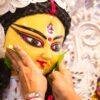
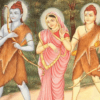

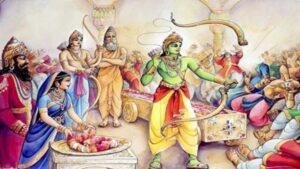
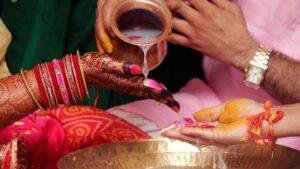

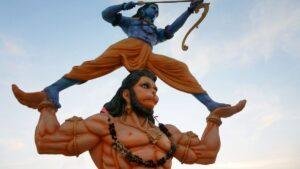




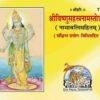




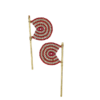
Add comment